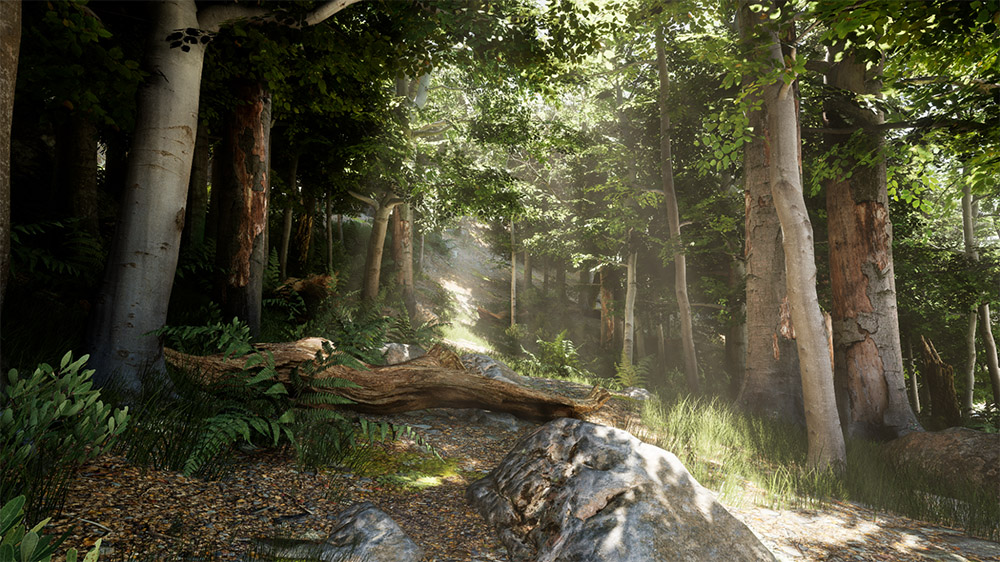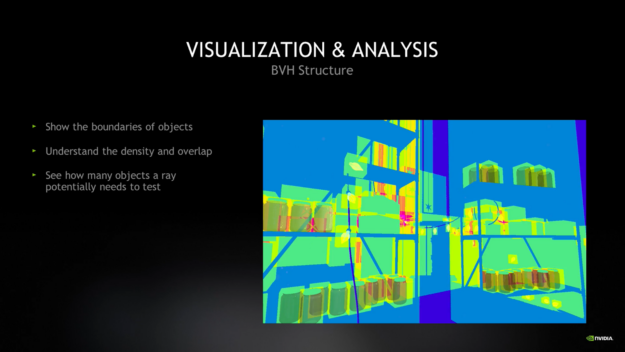Reality goes against these strange statement. So execuse me again, I really really don't get this.
Its not uncommmon for people to be 'afraid' of changes, in special in the technology space.
Follow along with the video below to see how to install our site as a web app on your home screen.
Note: This feature may not be available in some browsers.
Reality goes against these strange statement. So execuse me again, I really really don't get this.
As I said earlier, RTXDI works well with Nanite, and it renders both RT lighting and shadows, with good performance.First like i said HW RT shadows with Nanite is an inferior solution compared to virtual shadow maps
No they are not, the deveopers didn't mention a release date and most publications expect at least a 2024 release date.Tekken 8 and Sillent hill 2 are 2023 games
As I said earlier, RTXDI works well with Nanite, and it renders both RT lighting and shadows, with good performance.
No they are not, the deveopers didn't mention a release date and most publications expect at least a 2024 release date.
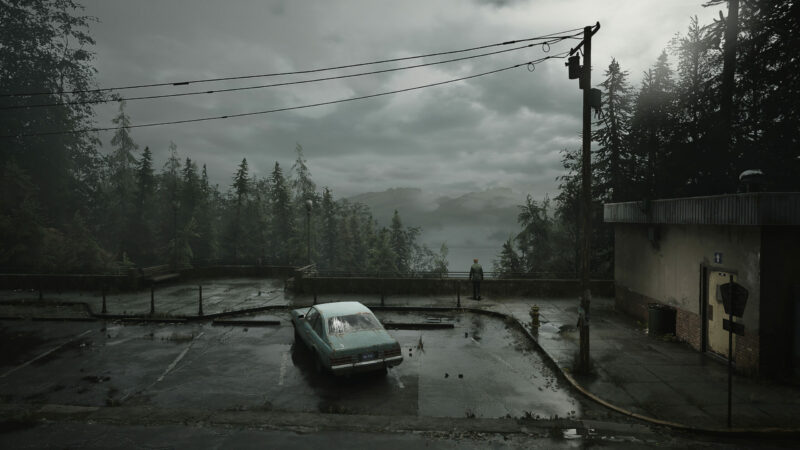

But shadow maps hog performance when many lights that cast shadows are used, in contrast RTXDI enables you to use hundreds of lights each casting accurate soft shadows, with AO, contact hardening and shadows from area lights and everything, for maybe a small drop in sub pixel accuracy, who even cares for that?RTXDI will not make HW RT shadows sub pixel accurate like Virtual Shadow maps with Nanite content.
No, according to news from 15 days ago, both are 2024, if not later, and we all know games gets delayed ALOT these days.And there is a rumored release during July 2023 for Tekken 8...
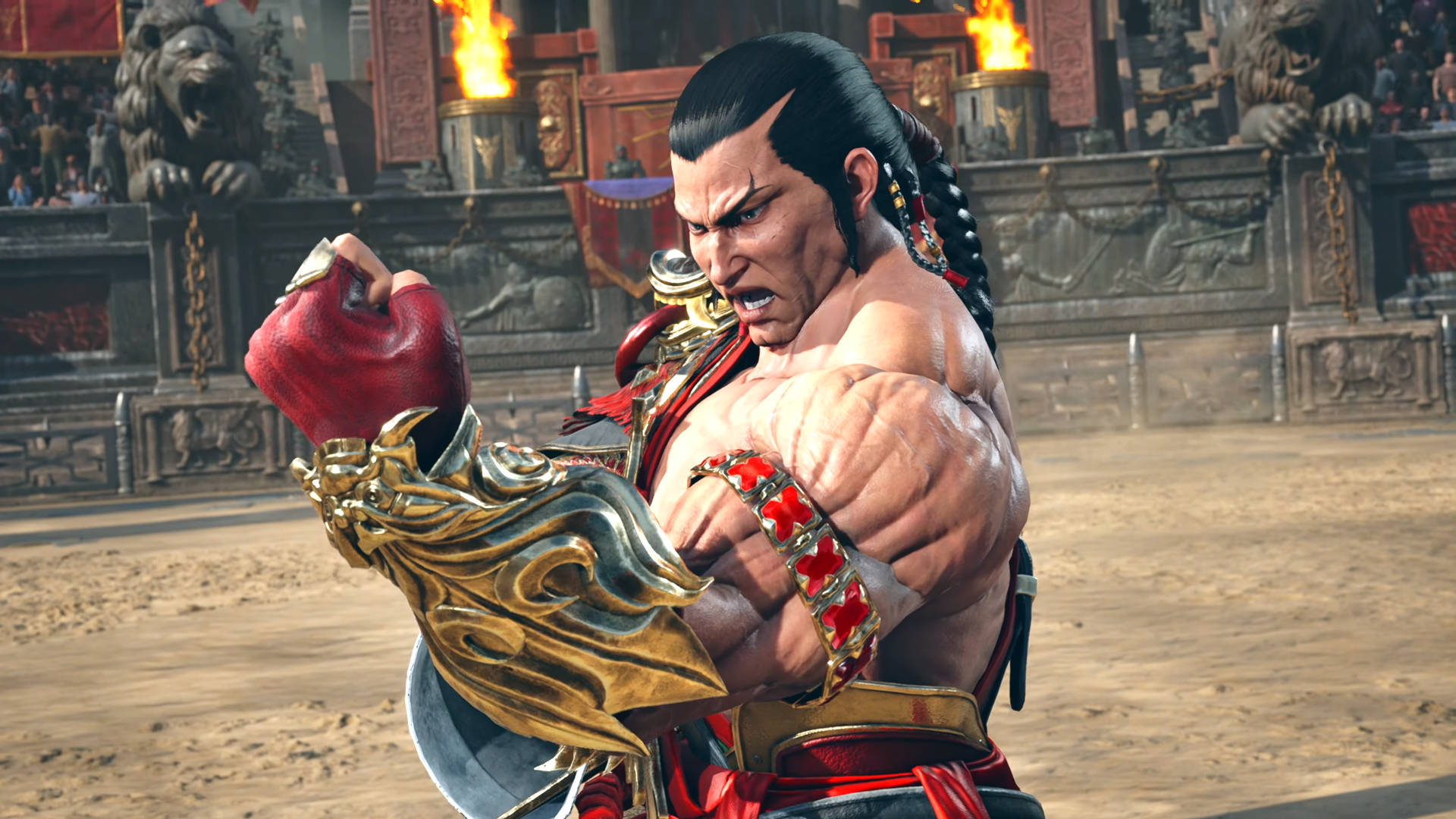
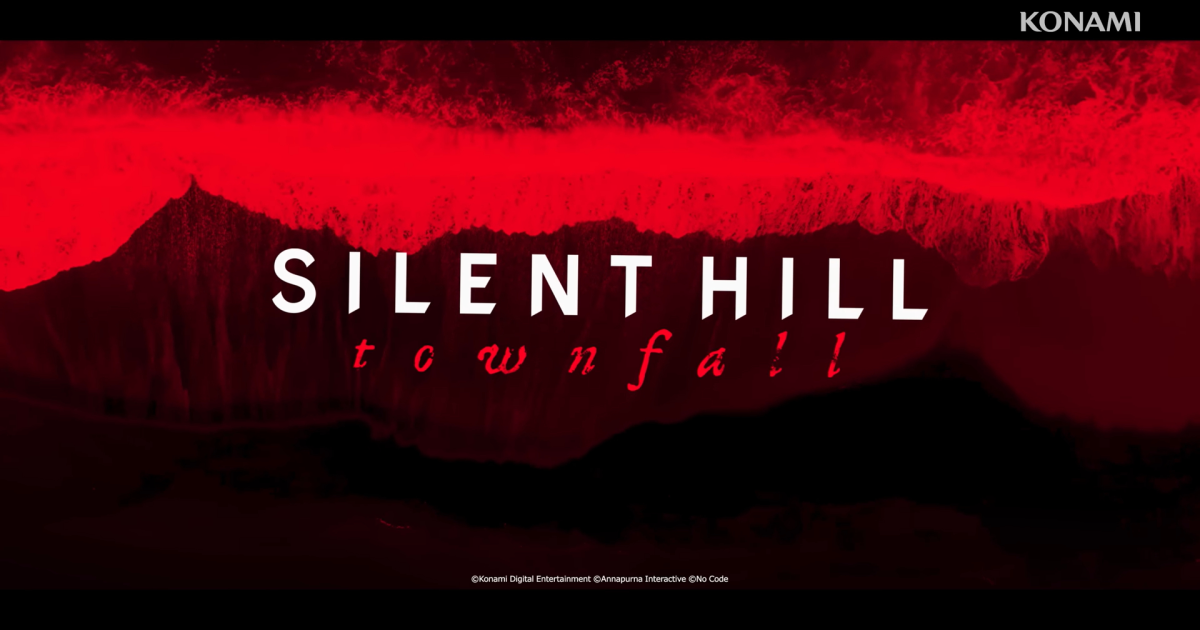
This is another game, not SH2 Remake.Silent Hill Townfall has no current release date or release window. The only thing we know is that Director Jon McKellan stated during the announcement stream that more would be shown in 2023. Based on that, we don't expect this game to come out next year, with 2024 being a possibility depending on what is shown next.

Silent Hill Townfall rumors: everything we know so far | Digital Trends
There are a few clues we've uncovered about this upcoming game. If you're ready to go back to Silent Hill, here's everything we know about Silent Hill Townfall.www.digitaltrends.com
But shadow maps hog performance when many lights that cast shadows are used, in contrast RTXDI enables you to use hundreds of lights each casting accurate soft shadows, with AO, contact hardening and shadows from area lights and everything, for maybe a small drop in sub pixel accuracy, who even cares for that?
No, according to news from 15 days ago, both are 2024, if not later, and we all know games gets delayed ALOT these days.
Series creator Katsuhiro Harada confirmed that the game is being built from scratch in Unreal Engine 5, with no Tekken 7 assets being reused, so it’s unlikely that the game will be hitting stores anytime soon, with most expectations being a late-2023 release at earliest, or a more realistic 2024 release.

Tekken 8 release date, demo, betas, and trailers
The Tekken 8 release date has now arrived, so here’s everything we knew leading up to the latest entry in this popular fighting game series.www.pcgamesn.com
Silent Hill Townfall has no current release date or release window. The only thing we know is that Director Jon McKellan stated during the announcement stream that more would be shown in 2023. Based on that, we don't expect this game to come out next year, with 2024 being a possibility depending on what is shown next.

Silent Hill Townfall rumors: everything we know so far | Digital Trends
There are a few clues we've uncovered about this upcoming game. If you're ready to go back to Silent Hill, here's everything we know about Silent Hill Townfall.www.digitaltrends.com
The disruption is coming from Epic. This is to AMD, Intel, Nvidia and DX RT API to change not the other way around.
Epic can do what they want, it wont and cant change what Sony, MS, NV, Intel, NV and others have pioneered. Sure in the PC space you can introduce new GPU's but consoles are stuck for a seven or more so years. HW RT aint going anywhere.
I didn't talk about Sony or Xbox because they are more flexible
Unfortunately thats not the whole story.
One solution to that problem that we have for techniques that use ray tracing shaders on XSX is to use what we call “Specialized State Objects”:
Which means the high-level ray tracing pipeline is broken down internally into multiple different ray tracing pipelines based on ray-gen VGPR
And then we select the one we want to avoid paying the occupancy penalty all the time.
And this is not needed on PS5 because there are no ray tracing pipelines as such.
Each ray gen shader is just a regular compute shader with known resource allocations.
Therefore on Xbox compiler breaks down ray gen shader into two parts: before and after TraceRay call and generates a lot of instructions to save and the restore state.
On Xbox the state goes into scratch memory.
On PS5 we can allow spilling state to either LDS or scratch or just kept in registers.
We can specify exactly how much can spill into each category separately.
On AMD that state goes into LDS, but what other vendors do might be of course different.
Additional challenge is that, like I mentioned before, the BVH traversal on consoles is implemented as a regular compute shader and only AABB and triangle intersections are HW accelerated.
Which means rays are not going to be reordered to improve coherence by the hardware.
In other words, it means that basically a ray lives on the thread on which it was spawned.
Any further shader invocations or traversal will happen on this particular thread.
So calling different shaders in a wavefront will have a waterfall effect, and compiler will scalarize based on either shader table index or resource access.
And for traversal, it means all the threads that finished will be marked inactive, and the wave will wait for the slowest thread.
That is absolutely insane. I remember when RDNA2 series came out and being blown away that amd just adding basic RT hw capability on the GPU made RT roughly 10 times faster than a pure software solution like the recent crysis 1 software remaster. And your telling me now that a 4090 is now 10 times faster than that?! (Roughly 100 times faster than where we started with purely software solutions)Dont forget that nVidia has updated the RT Cores with the Micro-Mesh Engine to use geometry compression. Hardware RT on a 4090 is now over 5x faster than the 2080TI and >10x better than the PS5. The pace of advancements has outpaced the software solutions. nVidia's RTX Racer uses a pathtracing engine and gets 1080p/60FPS.
Not inferior, I disagree, VSM cost a lot of performance too, especially with lots of shadow casting lights, RT shadows can support hundreds of lights, area light shadows and translucent shadows, that makes it superior or in -the worst case- on equal footing with VSM (in terms of tradeoffs).like i said HW RT shadows with Nanite is an inferior solution compared to virtual shadow maps.
VSM doesn't support area light shadows, and don't inherently do AO/Contact Hardening .. it's another hack. Yes RT shadows lack sub pixel accuracy compared to VSM with Nanite, but that's a very acceptable tradeoff.Virtual shadow mapping has fewer scene restrictions (dynamic and Nanite heavy) while providing sub-pixel accurate hard shadows.
No more than using software Lumen causes you to lose reflections, lose dynamic GI, lose hundreds of shadow casting lights, lose area light shadows and translucent shadows. It's a tradeoff, but you are choosing to focus on what makes HW-RT bad, instead of honestly mentioning what makes it good and bad, to somehow make it another doom and gloom story for HW-RT.Using proxy geometry is going to cause graphical bugs
You are not making any sense, if it's UE5 then they couldn't have started on it till 2020, the first showing of UE5, the closest you are looking for is a late 2023 release date, which means delayed till 2024 like the rest of the industry. Literally every game released in the last two years has had major delays. You also casually waved away your mistake about Tekken 8. Even so, if they managed to get a release date without HW-RT, there is still a strong chance that they WILL add HW-RT later for PCs at least. I don't know why would even bring this up!The game developement of Silent Hill 2 began in 2019.
Not inferior, I disagree, VSM cost a lot of performance too, especially with lots of shadow casting lights, RT shadows can support hundreds of lights, area light shadows and translucent shadows, that makes it superior or in -the worst case- on equal footing with VSM (in terms of tradeoffs).
VSM doesn't support area light shadows, and don't inherently do AO/Contact Hardening .. it's another hack. Yes RT shadows lack sub pixel accuracy compared to VSM with Nanite, but that's a very acceptable tradeoff.
Funny now you guys suddenly care about sub-pixel micro shadows, while ignoring scene wide changes that HW-RT bring in terms of GI accuracy, dyanmic GI on dynamic objects, more accurate, higher resolution reflections, off screen reflections, whole area light shadows, shadows from hundreds of lights, translucent shadows .. etc.
No more than using software Lumen causes you to lose reflections, lose dynamic GI, lose hundreds of shadow casting lights, lose area light shadows and translucent shadows. It's a tradeoff, but you are choosing to focus on what makes HW-RT bad, instead of honestly mentioning what makes it good and bad, to somehow make it another doom and gloom story for HW-RT.
Unbelievable.
Who cares about sub pixel shadow accuracy with Nanite when you are losing this many visual features? RT shadows with Nanite works well enough, the Matrix demo used them on cut scenes as "hero lights". And they were very good looking.
You are not making any sense, if it's UE5 then they couldn't have started on it till 2020, the first showing of UE5, the closest you are looking for is a late 2023 release date, which means delayed till 2024 like the rest of the industry. Literally every game released in the last two years has had major delays. You also casually waved away your mistake about Tekken 8. Even so, if they managed to get a release date without HW-RT, there is still a strong chance that they WILL add HW-RT later for PCs at least. I don't know why would even bring this up!
Which is why Epic Games extended virtual shadow mapping with shadow map ray tracing (tracing against shadow map so it doesn't use HW RT) to be able support contact hardening for soft shadows and they use distance fields in Unreal Engine to do ambient occlusion ...VSM doesn't support area light shadows, and don't inherently do AO/Contact Hardening .. it's another hack. Yes RT shadows lack sub pixel accuracy compared to VSM with Nanite, but that's a very acceptable tradeoff.
I don't think anybody here is dismissing the merits specific to HW RT ...Funny now you guys suddenly care about sub-pixel micro shadows, while ignoring scene wide changes that HW-RT bring in terms of GI accuracy, dyanmic GI on dynamic objects, more accurate, higher resolution reflections, off screen reflections, whole area light shadows, shadows from hundreds of lights, translucent shadows .. etc.
Less precise reflections and indirect diffuse lighting aren't big enough problems to not ship the product ...No more than using software Lumen causes you to lose reflections, lose dynamic GI, lose hundreds of shadow casting lights, lose area light shadows and translucent shadows. It's a tradeoff, but you are choosing to focus on what makes HW-RT bad, instead of honestly mentioning what makes it good and bad, to somehow make it another doom and gloom story for HW-RT.
Unbelievable.
Who cares about sub pixel shadow accuracy with Nanite when you are losing this many visual features? RT shadows with Nanite works well enough, the Matrix demo used them on cut scenes as "hero lights". And they were very good looking.
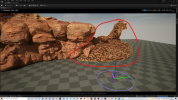
Just like having accurate reflections and GI.Having accurate shadows is very important
Dynamic GI is lost on "dynamic" objects with software Lumen. Only hardware can do tracing against skinned meshes. You also lose a metric ton of GI over distance, software only does 200m GI, hardware covers 1000m GI, so it's the best in an open world game.software Lumen doesn't mean losing dynamic GI
VSMs require some ray tracing to do soft, contact hardened shadows, which increase their cost under these conditions, when using multiple lights, the cost is huge. They also have a huge performance penalty on foliage and grass, UE5 recommends VSM to be disabled on such conditions.this is not a limitation of UE5
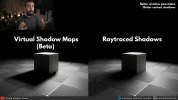
Again, you are still looking at a very late 2023 pushed back to 2024 release. I don't trust that any developer had access to UE5 before 2020 to be honest. The engine wasn't even available to developers until after that date.Because you think developers didn't have access to UE5 early on. You are not part of Bloober Team, they know better than you in which production stage they are. It seems they are on the polish phase.
Of course RT produces a more accurate result than vsms. you can do vsm on nanite meshes dude, you can only afford to do RT on proxies. Its not complicated why they use them.


Curiously, in NvRTX 5.0, there are improvements to solve some ray tracing issues, such as shadow mismatching when using Nanite.Having no shadows or very broken shadows was not going to be an acceptable outcome for Epic Games.
